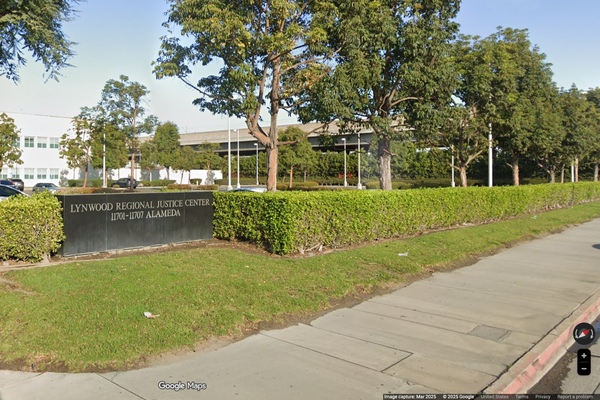
Two arms? Two legs? Two eyes and a head to hold them? Ugh. Boring! We’ve been doing that for literally the past 300,000 years. The humane genome needs to shake things up a bit. Can’t we grow prehensile tails already? Or maybe a third arm in the middle of our chests? What if our skin glowed in the dark? Imagine how much better our parties would be! While our evolution into trans-human party machines may still be a million years off, these sci-fi authors were kind enough to offer glimpses into the potential future of the human species, Here are 10 sci-fi novels about post-human evolution, so we all know what to look forward to.
All Tomorrows

All Tomorrows by C. M. Kösemen shows that when it comes to human evolution, tomorrow will not be a better day. This illustrated chronicle shows the myriad fates of mankind after our genes were irrevocably spliced up by the Qu, a galaxy hopping alien civilization who approach genetic engineering with the fervor of a Hollywood Hills religious cult. Viewing it as their sacred mission to screw with the DNA of every other life form, the Qu split the human genome into a series different species, kicking us back down the evolutionary ladder to non-sentience. Most of our poor, post-human brethren evolve in horrifying ways before dying out, but a few of us make the long climb back to sentient thought – only be destroyed by AI. Oops. It’s a billion year chronicle of the slow death of humanity, but hey, at least there are pictures!
Last and First Men

Olaf Stapledon’s The Last and First Men is an OG post-human evolution story, which, like whatever gross fish first heaved itself out of the primordial sea, walked to so the rest of trans-human sci-fi could fly! This “future history” is a two billion year chronicle of the many forms of civilization that hooted and stomped across planet Earth – beginning with our own. According to Stapledon, we make it to the year 3,000 (just like the Jonas Brothers said we would) then we expire along with the fossil fuels. After that, civilization rebuilds itself seventeen more times! We grow antennae, we get psychic powers, we evolve more genders than you can shake a stick at. All in all, we have an incredible run – until the Sun blows up, that is.
Dawn

Things aren’t looking good for humanity at the beginning of Octavia Butler’s Dawn. Hundreds of years after a world war turned our planet into a nuclear toaster oven, a young woman named Lilith woke up on an alien spaceship as one of humanity’s last survivors. Her saviors are the Oankali, a three gendered alien species whose bodies are covered in touchy-feely tentacles. Hot. The Oankali are equally down for us, and intend to interbreed with humanity in order to ensure the survival of our genome. While Lilith is flattered that the Oankali saw her from across the universe and liked her vibe, she’s not quite certain if she’s ready to commit to repopulating the Earth with human/alien offspring just yet. But as she begins to bond with a third-gendered Oankali named Nikanj, she begins to come around to the idea.
Childhood’s End

Childhood’s End by Arthur C. Clarke is the story of mankind’s toxic relationship with The Overlords, which like many bad relationships, began with bliss! Well, after mankind got over the initial existential terror of realizing we’re not alone in the universe, that is. When The Overlords came to planet Earth, they promised to free us from our suffering, making war, famine, disease, and want a thing of the past. While that sounded good on paper, humanity didn’t read the fine print – The Overlords asked for our very souls in return. As The Overlords reshape humanity, they strip of us our art, our culture, and our individuality. We evolve into something greater, but we leave ourselves behind. The tragedy is palpable – and foreshadowed from the jump. We really should have paid attention to the red flags.
The Eisenhorn Trilogy

The Eisenhorn trilogy takes place in the grimdark universe of Warhammer 40,000, which is positively teeming with post-humans. If the fact that mankind is under the rule of a ten foot tall undead space emperor wasn’t post-human enough, the galaxy is also crawling with genetically engineered super-soldiers, powerful psychics, and people that have fully integrated their bodies with machines. Gregor Eisenhorn is an Inquisitor, a clandestine agent of the Imperium of Man dedicated to scouring the galaxy clean of heresy. What counts as heresy? Basically everything that isn’t 100% human. Aliens. Daemons. Witches. Humans the cavort with any and all of the above. The great irony is that mankind has become a pst-human parody of itself – so far removed from its terrestrial roots that it would be unrecognizable to anyone alive today. Who’s the heretic now, Inquisitor? I’m kidding! Please don’t kill me!
Galápagos

A lesser known work by the great Kurt Vonnegut, Galápagos is the story of how mankind grew flippers and took to the sea! The story is narrated by the million years dead ghost of a Vietnam veteran, who was killed while building a luxury cruise ship. He recounts the tale of how group of unlikely people commandeered the vessel as society was collapsing, and managed to sequester themselves away from the apocalypse on an island paradise. Told with Vonnegut’s trademark sense of quiet melancholy and dry wit, Galápagos details exactly how we evolved into a non-sentient species of seal-people over a million year interim. Turns out we didn’t need our big, smart brains to ensure our survival after all!
Oryx and Crake

Oryx and Crake by Margaret Atwood is the story of how one mad scientist changed the fate of humanity forever. Once a burnout with a penchant for watching snuff films, the brilliant Glenn aka “Crake” spent his college years studying genetic engineering before being hired as a bioengineer by a massive health corporation. Laboring under the guise of creating Viagra 2.0, Crake spent his time developing a species of post-humans in secret, which he intended to use to replace the human race. After adding a sterilizing agent to his sex pill and selling it to the masses, Crake successfully doomed us all. The first of a post-apocalyptic trilogy, this is the story of how the end begun, and how human was muscled out of our own turf by lab-grown doppelgängers.
Ammonite

Ammonite by Nicola Griffith takes place on the distant world of Jeep – a planet apparently named after the drivable boxes on the roads of our own. Jeep has had a rough go of things, a virus ravaged the planet’s colonist population, killing all the men and transforming the bodies of the few women that survived. Years later, the planet is visited by anthropologist Marghe Taishan, who intends to distribute a vaccine to its populace. What Marghe doesn’t realize is that while she has big plans for the planet, the planet has equally big plans for her. As she grows closer to the native descendants of the original colonists, her body begins to change rapidly. How does a planet full of all female tribes produce more offspring? That’s a mind-boggling conundrum that Marghe will soon figure out for herself.
The Deep

A poetic work of sci-fi, The Deep by Rivers Solomon is the story of the wajinru – mermaid-like descendants of pregnant African women who were thrown overboard during the transatlantic slave trade. The wajinru live in blissful ignorance of their traumatic past, save for a sole member of their community whose job it is to remember. Unable to bear the burden any longer, the wanjiru’s historian Yetu journeys to the surface in order to escape, and finds solace by bonding with a human memory-keeper on the shore. As Yetu grows more distant from her people, the wanjiru begin to remember the trauma of their past – a trauma that threatens to tear their world apart. Melancholy, elegiac, and profound Solomon’s novel is as deep as the waters for which it’s named.
The Left Hand of Darkness

The Left Hand of Darkness by Ursula K. Le Guin is part of the author’s Hainish Cycle, a series of interconnected sci-fi books that all take place in the same distant future. Humanity has expanded across the stars, with the bulk of us organized into a loose confederacy called the Ekumen. Genly Ai is an ambassador of this interstellar organization, sent to establish contact with this isolated world of Gethen. The post-human population of Gethen are ambisexual, and only take on sexual characteristics during a brief mating period called “kemmer.” As a result, their society is radically different from the rest of the binary universe, and Genly’s frequent misunderstanding of Gethen’s culture causes him to become a social pariah. After Genly is cast out alongside the disgraced politician that aided him, the pair go on the run through Gethen’s frigid wasteland in order to find asylum. Part wilderness survival epic, part political thriller, part social critique, The Left Hand of Darkness has been evolving our notions of gender since 1969.
Have a tip we should know? [email protected]







